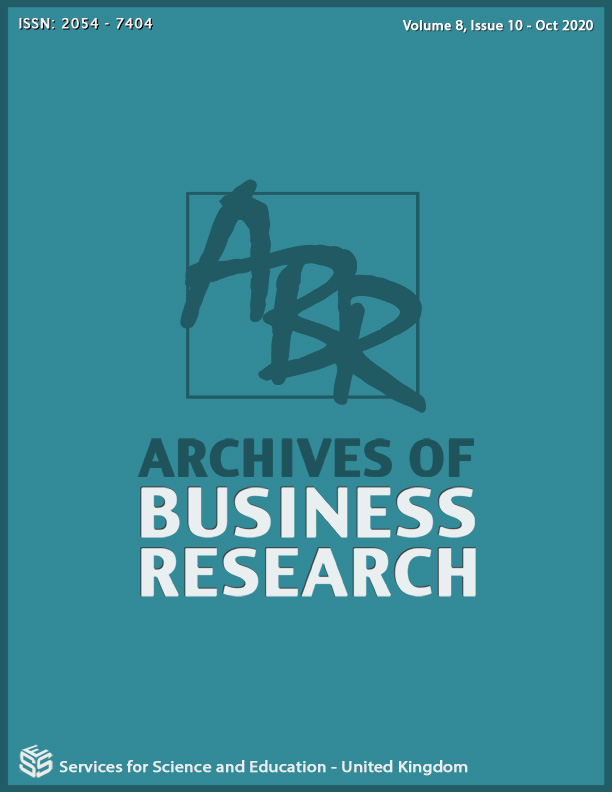Establishment of Systematic Strategic Planning Procedure for China's Green Coal Logistics by using Interpretative Structure Model
DOI:
https://doi.org/10.14738/abr.810.9220Keywords:
Coal, Green logistics, TRIZ, Interpretation structure model.Abstract
In today’s society with a globalized economy, countries around the world are pursuing efficiency while also pursuing environmentally sustainable development. Therefore, studying green coal logistics for environmental development and optimization is of great significance and practical value. On the basis of the green concept framework of coal logistics, this paper will determine the five main problems in the operation of green coal logistics and then propose seven improvement strategies to these five main problems by using TRIZ theory. Interpretative structural modeling (ISM) is used to establish a systematic development procedure of green coal logistics strategy to examine the development of green coal logistics. The analysis results of ISM indicate that, when developing green coal logistics, coal enterprises should retain the effective operation of the original operating mechanism. At the same time, enterprises should introduce a green coal logistics system and effectively merge the two to establish a simple and effective logistics system operating mechanism and cultivate employees’ awareness of environmental protection. Doing so will establish a green image of coal enterprises and decrease the cost of green logistics of coal enterprises. Next, each department within the coal enterprise should be refined. To enable various departments within the coal enterprise to improve work efficiency through information sharing and exchange, the operation process of each department needs to be standardized and the source and the scope of information of each department must be clarified. Finally, through the production, storage, sharing, and transfer of knowledge of information, coal enterprise employees can be assisted to effectively carry out green awareness popularization courses so they can acquire, produce, store, share, and transfer the knowledge of green coal logistics to enable coal enterprises and employees to understand the relationship between the development of green coal logistics and environmental protection.
References
[2]. China Government Network, Outline of the 11th Five-Year Plan for the National Economic and Social Development of the People's Republic of China, 2006. http://www.gov.cn/gongbao/content/2006/content_268766.htm
[3]. Altshuller, G., 40 principles: TRIZ keys to technical innovation, 1997, Technical Innovation Center: Worcester, MA, USA.
[4]. Altshuller, G., The innovation algorithm: TRIZ, systematic innovation and technical Creativity, 2000, Technical Innovation Center: Worcester, MA, USA.
[5]. Warfield, J. N., Intent structures. IEEE Trans on System, Man and Cybeni, SMC, 1973. 3(2): p. 133-140.
[6]. American Logistics Management Association, Definition of Logistics, 2002. http://www.docin.com/p-777091896.html
[7]. Cheng, H. H., and H. Q. Liu, Theory and Practice of Distribution Center Management, 2011, Peking University Press: Beijing, China.
[8]. Wu, J., T., Hu, and T. J. Yang, E-commerce Logistics Management, 2001, Zhejiang University Press: Hangzhou, China.
[9]. Wei, Y., E-commerce Logistics Management, 2006, Beijing Jiaotong University Press: Beijing, China.
[10]. Xie, R. H., R. W. Luo, and D. Z. Zhang, Principles and Methods of Logistics System Planning, 2004, China Fortune Press: Beijing, China.
[11]. Zhang, S. Y., and W. J. Zhang, Introduction to Logistics, 2011, Fudan University Press: Shanghai, China.
[12]. Jiang, X. M., X. M. Hu, D. F. Zhao, J. Wang, and H. Xu, Study status and outlook on China coalgreen logistics. Coal Economic Research, 2017. 37(2): p. 22-27.
[13]. Li, Y. J., Discussion on the Importance and Development Strategy of E-commerce in Coal Enterprises. Economic Management Research, 2020. 2(1): p. 61-62.
[14]. Wang Z. Y., Green Logistics. Journal of Jiamusi University (Natural Science Edition), 2006. 24(4): p. 607-610.
[15]. Li, C., The Application and Future Development of Information Technology in Modern Logistics Enterprises. Think Tank Era, 2019. 2: p. 100-101.
[16]. Xu, W., The Current Situation, Problems, and Development Trend of Our Country’s Coal Circulation System. Development Research, 2014. 8: p. 10-23.
[17]. Tang, X. F., and J. Yu, Realizing the Transformation from Contaminative Coal Logistics to Environmental Coal Logistics. Mining Research and Development, 2002. 25(1): p. 83-85.
[18]. Li, P. W., Talking about Dust Hazard and Treatment Measures of Coal Washing Plant. Coal Engineering, 2009. B11: p. 88-90.
[19]. Gong, Y. H., The Nature and Treatment of Coal Mine Water and Wastewater. Coal Mine Environmental Protection, 2000. 14(1): p. 26-27.
[20]. Liu, B., X. Q. Yang, and Y. Li, Problems Faced by Xinjiang in Developing Low-Carbon Logistics and Its Improvement Path. Practice in Foreign Economic Relations and Trade, 2017. 3: p. 89-92.
[21]. Savransky, S. D., Engineering of Creativity: Introduction to TRIZ Methodology of Inventive Problem Solving, 2002, CRC Press: FL, USA.
[22]. Liu, F. Q., Logistics mode and coal enterprise logistics selection analysis. Energy Technology and Management, 2010. 1: p. 154-156.
[23]. Zhao, L. Q., Y. B. Li, and J. W. Xu, Monitoring and performance evaluation of third-party logistics service. Industrial Technology & Economy, 2004. 23(2): p. 66-68.
[24]. Qian, B. Z., Development Status and Prospect on Infusing CO2 into Underground to Increase Recovery Ratio of Oil and Gas. China Environmental Protection Industry, 2008. 12: p. 57-61.
[25]. Olsen, S., Group Planning and Problem-solving Methods in Engineering Management, 1982, John Wiley & Sons, Inc.: NY, USA.






